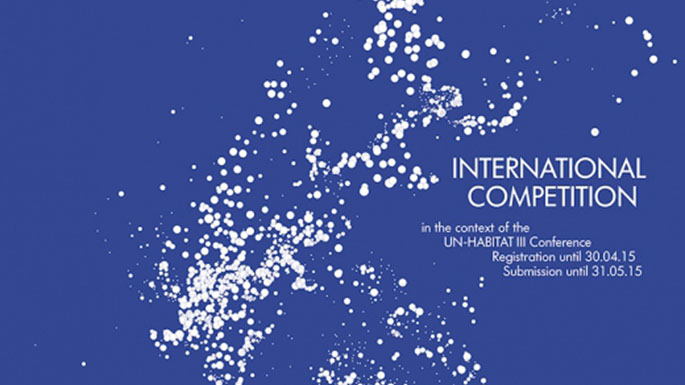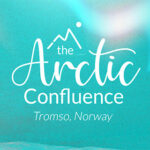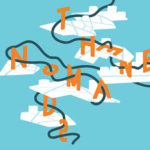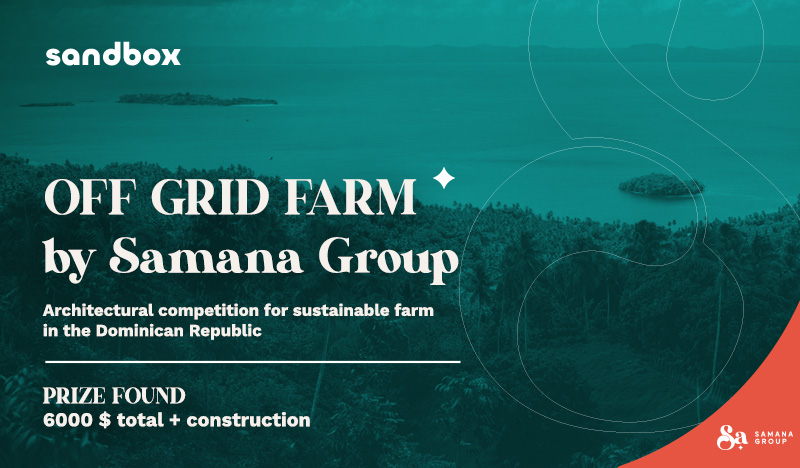Submission: May 31, 2015
Registration: April 30, 2015
Language: English
Location: Concept
Prizes: € 20,000
Type: Open for all
Hastened by industrialisation, the progressive urbanisation of our world has profoundly transformed the planet and continues to do so. The impacts of these changes have not yet been grasped in full, and an end to this process is not foreseeable.
Cities were always centres of innovation and the driving force of developments, throughout all epochs and cultures. The organisation of life in cities formed the starting point for the development of structures based on the division of labour and hence the release of creative potentials that benefited science, technology and the arts, for the accumulation of capital, increasing prosperity and the refinement of life. With few exceptions, cities were also the stages on which the struggles for more social equality and for societal progress played out. Cities are likely humankind’s greatest cultural achievement and, in this respect, a marker of the Anthropocene period, the geological age defined by human activity.
While the development of the (European) city over the course of its two-and-a-half thousand year history features umpteen radical departures, within which the forms of the reproduction of urban life have fundamentally changed, cities nevertheless remained insular structures up to the nineteenth century. By contrast, the degree of urbanisation that we are witnessing today is unprecedented. The further development of the Anthropocene period ought to be closely linked with whether or how we can organise or ‘manage’ the urbanisation that emanates from this process, and which revolutionises the established conditions no longer merely on a local, regional or national level, but which has long-since become a global phenomenon with far-reaching geological and geopolitical repercussions.
Virtually all the questions concerning the future of humankind are related to the urbanisation of the world, or come about as its consequence:
- The predicted growth in the population to more than 9 billion by 2050 will have to be mastered primarily in the cities.
- Cities functionalise the countryside and subject it to the postulate of their provision and transform agricultural structures. At the level at which urbanisation is progressing, a traditional agricultural subsistence is made more difficult – to say nothing of the looming battle over who will use agricultural reserve areas.
- The material and energy exchange processes of cities and agglomerations impinge on nature and the environment to a far greater extent than rural forms of settlement. Sustainability in the sense of a circular economy is first and foremost also a question of urban metabolism.
- The consumption of energy and resources in cities, the waste products and emissions of their non-sustainable metabolisms, fuel climate change; conversely, cities, above all some of the newer megacities, will be most affected by climate change.
Besides the energy supply, the availability of water is the most pressing problem for the future. The rising standard of living in cities is increasing agricultural water consumption, whereby the cities themselves are contributing significantly in many ways to the shortage of resources. - The migration from rural to urban areas driven by the prospect of better living conditions has become a global migration movement, rendering traditional models of national limits or territorial administration unions superfluous and seemingly historically obsolete.
- The extreme social disparities on a global level are reflected in the cities, especially in the booming cities of the southern hemisphere and in the Asian region. A large proportion of the population lacks infrastructure, healthcare, access to education, adequate living conditions and a hospitable environment.
- How the relationship between the individual and the community is regulated will be key to maintaining provisions in the cities. The model of increasing isolation, the fully equipped individual and the private household pushes not only social, but also ecological and economic limits.
- The difficult conditions for migrants starting out in a city make imagination and resourcefulness essential to survival. As long as the political will exists, this holds great promise for the development of new solutions to the challenges of urban coexistence.
- Cities are where new models of political participation must be developed and put to the test – models that facilitate the distribution of societal wealth according to the changing circumstances.
We are living in an age of radical change characterised by the interleaving and rapid development of two processes in particular. As such, the unstoppable process of urbanisation corresponds with the unstoppable process of the digitalisation of all functional aspects and spheres of life. While urbanisation fundamentally changes material structures, i.e., the physical world around us, digitalisation creates an intangible metastructure, so to say a ‘world beyond the world’, the influence of which often remains invisible. Everyday urban life plays out in these two worlds; maintaining the physical existence of the city is no longer conceivable without background digital regulation, whether the organisation of the urban infrastructure with transport, energy and water management, the work of the municipal authorities in diverse offices and law enforcement, business dealings with the circulation of goods, money and services or private communication structures and social networks.
Reference to the quantitative dimensions of the urbanisation process is by now commonplace in literature concerning the city. But what does this urbanisation of the world mean, and what are its consequences? The image of the city that we create for ourselves is an ideal one with a linear history; urban planning is largely based on ideal concepts handed down from the past. How does a city or an agglomeration function today and what, or how much, do we in fact know about this? How do the electronic and physical worlds intersect and which tendencies are found in both? Are there any explanatory models that still cover the organisational structures of both city and agglomeration, or do these drift apart in their development, depending on whether or to what degree they are networked, whether they are growing or shrinking, how many inhabitants they have, whether the per capita income is rising or falling, whether they have a sustainable approach to, e.g., transport or waste management, the geographical or climate zone they are located in or the nature of their environs, etc. These and similar questions form the point of departure for the competition.
INFORMATION DESIGN
Today, the difficulty of empirically describing reality no longer lies in a lack of information, but, to the contrary, in the constantly growing amount of data that makes it difficult to draw an overall picture of society and to distinguish between what is important and what is unimportant. Today we have access to an inestimable wealth of data, much of it automatically generated: statistics, personal data, photos, documents, etc. Hardly anything seems able to elude this universal visibility in the digital age. At the same time, the present is increasingly opaque. There is precise data for more and more questions of detail, but it is getting harder to find orientation and gain an overview of the present; the quantitative description of phenomena is getting denser, but understanding of the underlying relations and processes seems to be waning. Considering that all societal activity depends on information, the wealth of data poses a real dilemma; we can indeed speak of a “digital opacity”. Automated processing with the aid of programmes that autonomously view, order, and evaluate data in no way automatically creates transparency. A situation arises in which political activity is not empirically verifiable and is dissolved in politically exploitable contradictions.
Information design is more than a collection of data: information design uses data to create statements that provide insights into societal circumstances. Information design reveals connections behind the surface of the phenomena. Information design provides orientation. It creates a hierarchy of information based on relevance and content. It reduces complexity, thereby creating an overview.
Information design is not neutral. The shaping of information is influenced by the interest in knowledge. An enlightening, emancipatory information design reveals facts that are repressed, not spoken of, or forgotten, but that are nonetheless essential for understanding the present. And it thereby influences the perspective of societal activity. The image of the world we make for ourselves determines how we act.
THE TASK
On the basis of empirical material, of data and facts, visualisations should be developed that
- cast light on the current problems of the urbanisation process
- indicate strategies in the approach to these problems
- and that, as far as can be discerned, present more advanced concept
The presentation should thereby look behind the facts and clarify coherencies and trends. The presentation should visually display spatial and temporal circumstances and trace the forces driving their development. To master the task, all techniques of visual representation and pictorial media can be employed, but a coherent overall concept should be recognizable in the selection, transformation and presentation of the information. Possible topical groups that may be developed as main focus areas are:
1. URBAN METABOLISM: The conservative critiques of the city in the late nineteenth century already saw the size, in other words, the population of the rapidly growing cities as one of the causes of societal ills. How can the megalopolises of today, which have grown tenfold, ensure stable social conditions and supply and waste systems for the population and, respectively, how can a certain standard be maintained in the case of shrinkage? How environmentally sustainable is the urban metabolism? Besides the delivery of municipal services, which mainly applies to transport provisions and waste and water management, the flows of materials that pass through a city as well as its global integration and logistics are of interest. To what extent are the beginnings of a sustainable circular economy and the replacement of goods by services discernible?
2. SPATIAL STRUCTURE: Size alone is not an adequate indicator for the social conditions that result from the spatial concentration of people. Density, i.e., the relation of population number to available space, is more relevant. Which density is reasonable or still beneficial and in which way do building structures modify the experience of density? What do the spatial structures of the new megalopolises look like? Are there spatial distribution mechanisms such as, e.g., the East-West model with graduated building density? The desperate housing situation of the nineteenth century was first and foremost a density problem. The compounds in which asylum seekers or migrants are housed in today are reminiscent of these in terms of density, while the gentrification of urban neighbourhoods invariably also means a reduction in density.
3. POPULATION: The social integration of the different population groups in a community is considered to be a guarantor for political stability. Accordingly, the concept of a social mix in urban neighbourhoods stands at the top of the list of planning objectives, although without concerted counteraction, the tendency towards segregation appears to reassert itself; as a rule, the more recent ‘soft’ gentrification of neighbourhoods is also associated with social segregation. Are there examples of a sustainable gentrification of urban areas without displacement? Would the composition of the population of informal settlements change if these were legalised?
4. SOCIAL INNOVATIONS: Today, in accordance with municipal practice, the dual concept of formal/informal is no longer seen as a dichotomy, but as a tiered series of steps. For a long time, the term ‘informal’ was reserved for ‘unauthorised’ settlement on the peripheries of core cities, without rights of land ownership, whereby not only the legal status, but also the internal organisation, based on self-help and neighbourhood assistance, is informal. It constitutes, after legalisation, a necessary complement to the supply of municipal provisions. Informal structures meanwhile also increasingly characterise the historic cities of Europe, both as informal housing situations resulting from migration and migratory labour and in terms of community involvement and self-help. The latter compensate for cutbacks in the provision of social services and the privatisation of formerly public services. New concepts and solutions that can be tried and tested with fewer bureaucratic obstacles bring innovations to the publicly managed services of general interest. Here, practical action plays a part in the direction in which a society develops.
5. DIGITAL CITY: Man has created for himself a mantle of data, which envelops him and his environment like a second skin. The growth rates of this construct are exponential and cannot be compared with any form of biological reproduction. It is an irreversible development, which is currently the subject of controversial debate, with the bywords ‘private sphere’ and ‘control’ pitted against a ‘brave new world of intelligence’. What significance does this electronic mantle have for the functioning of a city, in relation to both infrastructural services and the economic and planning-related evaluation of personal data? How secure or vulnerable is the electronically regulated city, in which man is both a data provider and a data receiver, who with the assistance of his mobile prostheses can both reach out and be sought out. To what extent are slum areas and informal settlements connected to the electronic world? Do disadvantages arise from poor networks, and do the mobile networks dependent on material conduit systems open up new opportunities for development? That new forms of political and citizens’ engagement take shape in social networks has become evident, based on numerous examples in recent years.
6. REAL ESTATE INDUSTRY: The global link between financial capital and the real estate sector is a significant underlying factor for urban growth and for the management of land and the existing real estate for both housing and commerce. The collapse of the property bubble in 2008 with the bankruptcy of Lehman Brothers is merely an extreme example of how the financial markets influence spatial planning. Based on the transactions at a municipal level, it is clear that urban development is influenced at least to the same extent by investors or investment-seeking capital and by public policy development. A particularly blatant example of the incompatibility of the objectives of the various participants is represented by the sales of complete housing stocks and settlements from the social housing sector to hedge funds. As a result, the living conditions of a large proportion of the population became the plaything of financial transactions. How can such constellations of power be exposed? Can they be regulated? What possibilities for the supply of affordable housing exist beyond the laws of the financial market?
The spatial localisation and the scale of the analysis are left open; several scale levels and areas may be linked together in the work. However, contact and collaboration with the municipalities and the players in local politics must be sought. The selection and research of a suitable topic is no less relevant than the conversion of the research into visualisations and the methodology thereby applied. The information must be clearly communicated, must not rely on the viewer’s standard of knowledge and must not require detailed verbal clarification.
PARTICIPANTS
The competition is intended for
- Designers from the fields of architecture, urban and regional planning, environmental planning, graphic, product and media design, statistics, cartography, photography, film and the visual arts
- Scientists from the fields of art and cultural theory, art education, information and communication sciences, social sciences, economics, environmental sciences and geosciences
- Students from both of the above fields.
Cooperation between designers and scientists in interdisciplinary teams is recommended.
Online partner exchange
From 1st of December 2014 for the initiation of the cooperation between designers and scientists in interdisciplinary teams: http://www.archplus.net/planetaryurbanism
Specifications
1. 3 to 4 A2 pages in portrait format, to be submitted both on paper and in digital form (as a PDF on a data storage device). For dynamic and interactive forms of information design, data may alternatively be submitted
in standard format on a data storage device. In this case, only one rather than four A2 pages should be submitted as an outline.
2. Explanatory text and list of sources
a) on the selected topic and the type of empirical material: Which data and information are used? How are these generated where required? (Coherent information about the data sources or baseline information)
b) Methods of information processing and representation: With which idea and which epistemological interest is the information processed? What is the hypothesis and concept of the work?
Language
English. The panels are to be written in English; the explanatory text and list of sources should be written in both English and German, if the first language of the participant is German.
Author’s declaration
With the author’s declaration (please download the form from the homepage), the entrants declare that they are the authors of the work submitted and that this is free of third-party rights. By participating in the competition the authors agree that the organisers may publish their work under the authors’ names without further remuneration after the competition has been finalised. The organisers will retain the documents submitted and they will not be returned. The authors retain ownership of the work.
Procedure
Registration from 01.12.14 to 30.04.15 on the ARCH+ homepage.
Submissions must be received by 31.05.15
Preliminary assessment by ARCH+ and a group of experts
Jury session in the end of July 2015. The jury will choose the prize winners from the submitted works; the jury will select the number of prize winners and the distribution of the prize money.
Prize money
€ 20,000








